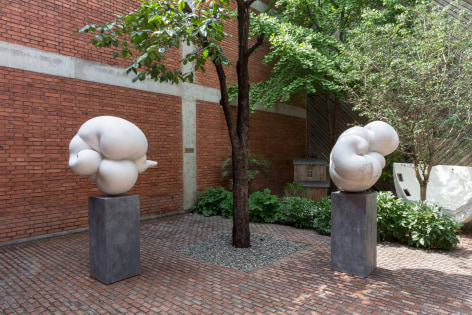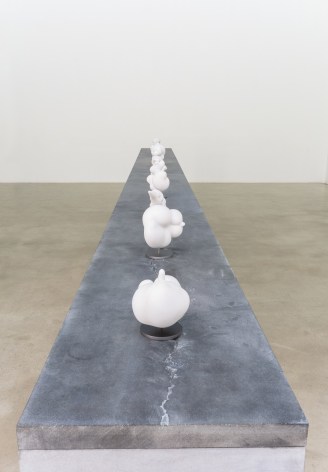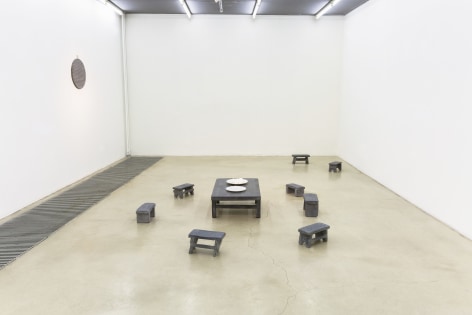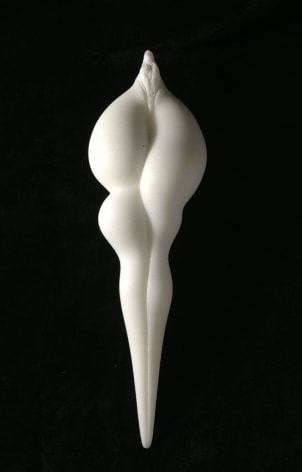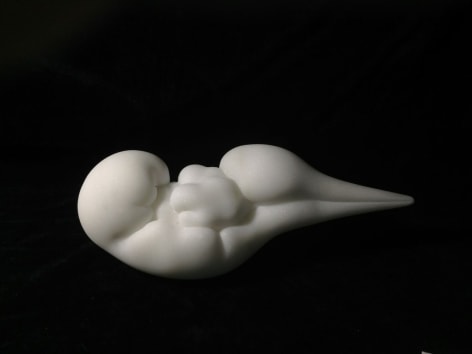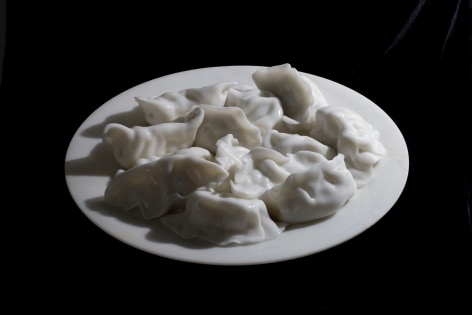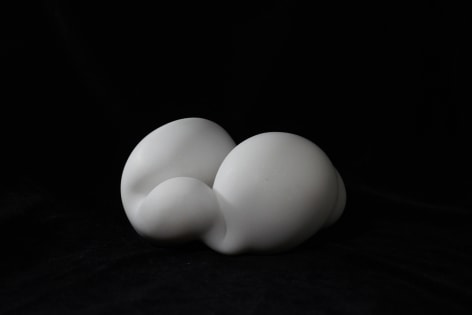Chambers Fine Art is pleased to announce the opening on June 24, 2017 of Song Hongquan: Clouds. Born in Hebei Province in 1978, Song is the son of a noted stone carver and spent his formative years working on the land, experiences that were later to exert a profound influence on his artistic practice. Direct carving in stone or marble continues to be his primary means of expression and forms from the natural world are his inspiration. He is one of the rare artists in China to have matured outside the academic system, an experience that accounts for the singular purity of his art.
His remarkable technical skills were first announced in After the Stone Age (2011), a group of highly realistic replicas of stone carving tools carved in stone. Paying homage to the history and profession of stone carving, Song presented his credentials as a worthy successor. Although he has not abandoned this approach, his next major body of work Units presented at Chambers Fine Art in 2013 was executed in gleaming white marble and referred not to man- made objects but to forms from the natural world, specifically seeds that he systematically gathered and collected. Once enlarged and executed in marble, the seeds, some of which are scarcely visible to the naked eye, revealed surprising affinities to the human form. Without any direct exposure twentieth century modernist sculpture, Song inadvertently revealed himself to be an idiosyncratic practitioner of the biomorphism that characterizes so much twentieth century sculpture.
In Clouds Song turns to another natural phenomenon as source of inspiration, namely Tabasheer, dried siliceous resin obtained from the nodal joints of certain species of bamboo. Also known as bamboo tears, Tabasheer is widely used in the traditional Ayurvedic system of medicine and in traditional Chinese medicine. Highly valued, it is used to treat conditions ranging from cough to coma and stroke. Song is a believer in the effectiveness of Chinese medicine and on his journeys from Quyang to Beijing, always stops in Anguo City, Hebei Province, to visit Chinese medicine markets and the An Guo Traditional Chinese Cultural Museum.
More complex than the forms of Units, Tabasheer presented new challenges to Song. Unlike the unitary structure of Units, the unpredictable forms of the sections of Tabasheer suggest not only human and animal forms, shells, embryos and other natural phenomena but also clouds, hence his decision to use Clouds as the title of the exhibition and the individual works. Just like clouds, constantly changing, Song’s sculptures seem to be in a state of metamorphosis as the viewer moves around his carvings. In complete contrast to the Cloud sculptures is the installation in the small gallery of Song’s deceptively realistic carvings in granite of traditional Chinese wooden furniture, a low table surrounded by stools set with a plate of dumplings carved from white marble.

